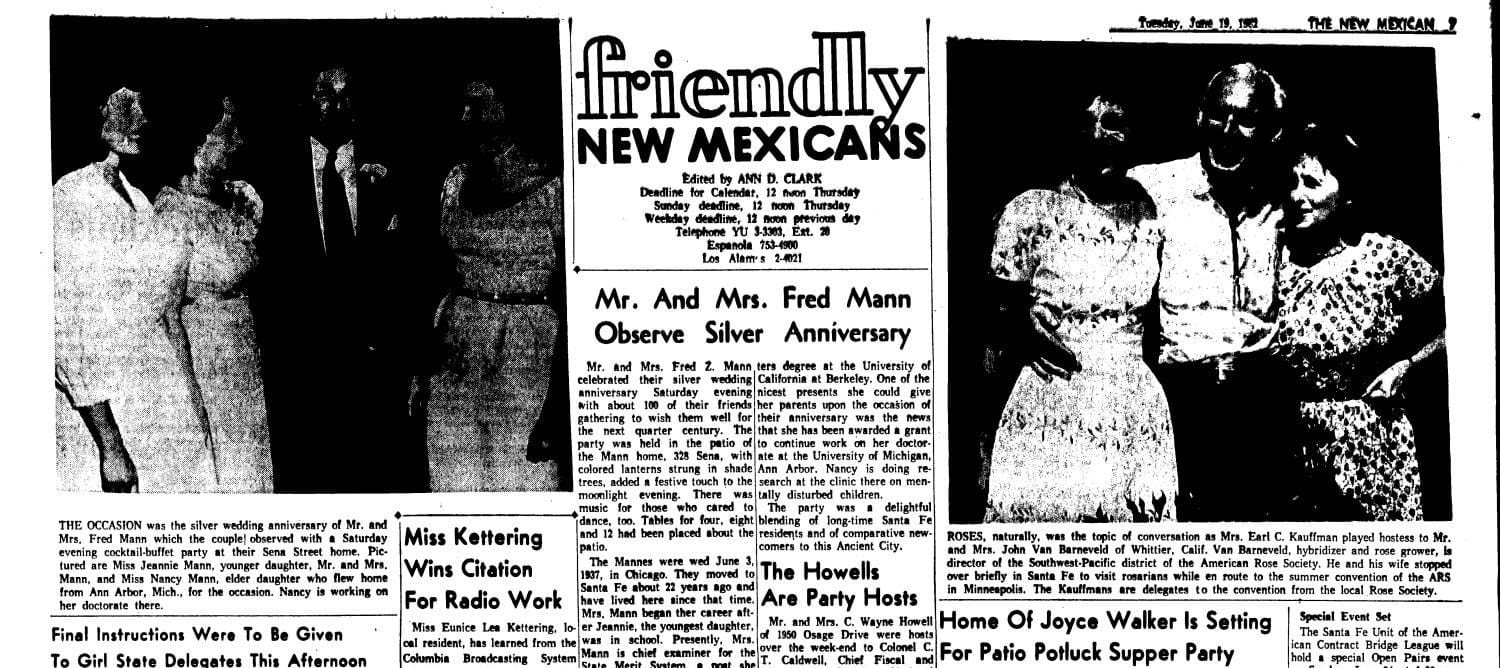Recently a friend asked me why I am so passionate about the subject of immigrants and immigration. My interest goes back to my hometown and life growing up in Santa Fe, New Mexico, living as a first generation American with Hungarian parents.
Santa Fe, itself, informed my first 25 years. The town had a majority of Hispanic (the term used at the time) Catholic residents. Following that were the Indians (still the term used by my tribal friends in New Mexico) and then everyone else. I was one of the everyone else group — the “Anglos.” Occasionally I was teased for this status, but never disparaged or abused.
Santa Fe — “The City Different,” a nickname going back over 100 years — cherished its eccentricities, its diverse cultures and religions. We reveled in our uniqueness. I smile as I remember a jealous friend, at the age of ten, who wished he could be Jewish. Why? So he wouldn’t have to go to catechism.
My father emigrated to the United States from Transylvania at the age of 31 (or possibly 33). He had a strong Hungarian accent and European presence. Fred Z. (for Zoltan) Mann was adored by my friends and the Santa Fe community at large. My parents 25th wedding anniversary was featured in the “Friendly New Mexicans” section of the The New Mexican, a Santa Fe daily paper dating back to 1849.

As a European Jewish family, we were a minority within a minority. My parents’ Jewish friends were also immigrants or refugees. The Santa Fe Jewish community in the 1950s was not primarily American born. Many were from Germany, Austro-Hungary, Poland or Canada.
Mine was one of the white faces among my sweet-smiling brown friends. I developed an affinity for Spanish speakers and Spanish surnames. They were the cheerleaders, jocks and class presidents in my high school.
Then I moved to Detroit. I encountered different diversity in the surrounding cultures. Restaurants with every kind of ethnic food were available. The Jewish community was huge by my standards and even the Jews were diverse. I became involved in the Soviet Jewry movement, not because I came from a Russian background, but because I profoundly believed in justice for refugees and immigrants — those people who wished to build a life in our country as my parents had done.
Until recently, “refugee” and “immigrant” were words that often carried a positive connotation, not that the issue has ever been a simple one. Even by historical standards, 2025 has seen the treatment of anyone perceived as an outsider spun upside down and inside out.
There may not be a clear, bipartisan solution to illegal immigration, but this administration has shown just how destructive it can be to pursue a campaign that fails to recognize the rights and humanity of everyone in this country, no matter their legal status. Randomly rounding up “suspicious” dark-skinned people and sending them to camps or to countries they left out of fear — or never lived in — creates myriad new problems without solving any.
So many people, like my parents, came to the United States to live freely and safely. Jews from across the diaspora left their homes fleeing prejudice and violence. It was not easy, but there was a process for becoming a citizen.
Immigration is the United States’ greatest competitive advantage. In spite of current rhetoric, statistics show that immigrants do not “take American jobs.” In fact, new communities create jobs, fill labor shortages, and start new businesses. With declining birthrates in developed countries worldwide, we should be shoring up social welfare for low-income Americans and developing a system for motivated, vulnerable and entrepreneurial people to come to the United States.
We must demand dignity and respect for the people in our communities who have come here for the same reasons our parents and grandparents came. Immigrants and refugees are not criminals and should be recognized for their desire to live and work peacefully in the United States, just as immigrants and refugees have always done.
Comments
Sign in or become a Nu?Detroit member to join the conversation.
Just enter your email below to get a log in link.